Accommodation (BB Basis)
Transport in an air-conditioned private car/van accompanying English speaking chauffeur guide throughout the tour
Complimentary tickets for Kandy cultural dance show
Daily one 500 ml water bottle per person
Free sim card on arrival
All applicable taxes
Entrance fees at visiting sites as per the given itinerary
Cost of 4x4 jeep hire for safaris and off-road transport
Early check in & late check out
Visa & Airline ticketing
Lunch, dinner & beverages
Tips, portage or any expense of personal nature
Cameras and video permits for certain sites
Guide tips
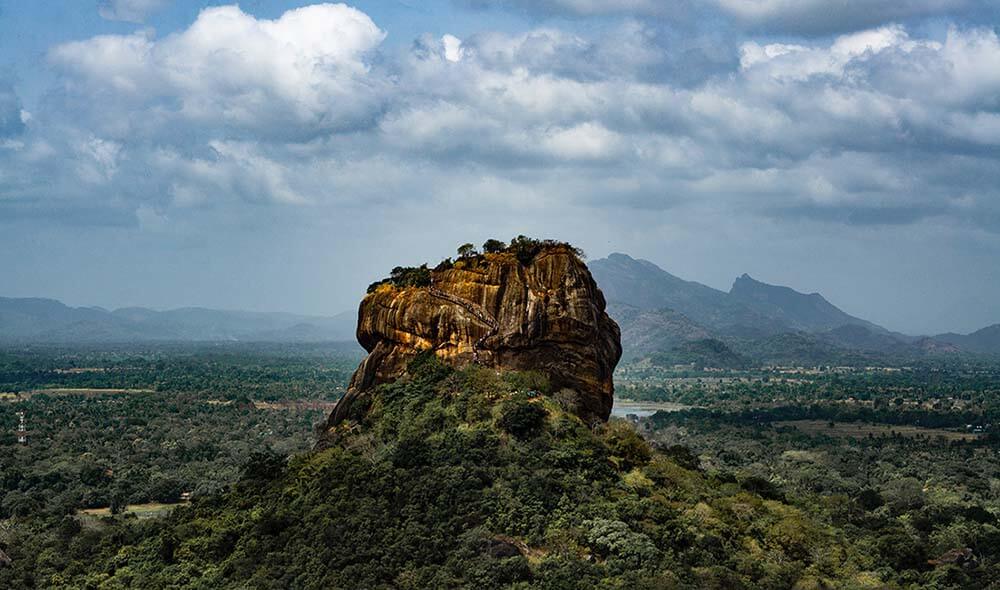
Chilaw Munneswaram Kovil
Koneshwaram Kovil in Trincomalee
Pinnawela Elephant orphanage
Sita Kotuwa in Hasalaka
Sita Kovil, Rawana Falls, Bandarawela, Ella, Divurumpola Temple etc.
Kelaniya Temple
½ day Colombo Shopping and city tour
Brief Itinerary



Meet and greet at the airport and transfer to Sigiriya via Chilaw, Sri Lanka
It is believed that Munneswaram predates the Ramayana and a temple dedicated to Lord Shiva was located here. Munneswaram means the first temple for Shiva (Munnu + Easwaran). A Shiva Lingam was
already here when lord Rama visited the place. Lord Rama after his victorious battle left for Ayodhya with Sita in one of King Ravana's vimanas. He felt he was being followed by Bramhaasthi dosham (a malevolent black shadow) as he had killed King Ravana who was a Brahmin. When the Vimana was passing over Munneswaram, he felt the vimana vibrating, and realised the "Brahmaasthi Dosham" was not following him at this particular point. He stops the vimana at this juncture and asks God Shiva for a remedy. God Shiva blessed Lord Rama and advised installing and praying for four lingams at Manavari, Thiru Koneshwaram, Thiru Ketheshwaram and Rameshwaram in India, as the only remedy to get rid of the dosham. The first Lingam was installed at Manavari about 5 Km from here, near the banks of Deduru Oya.
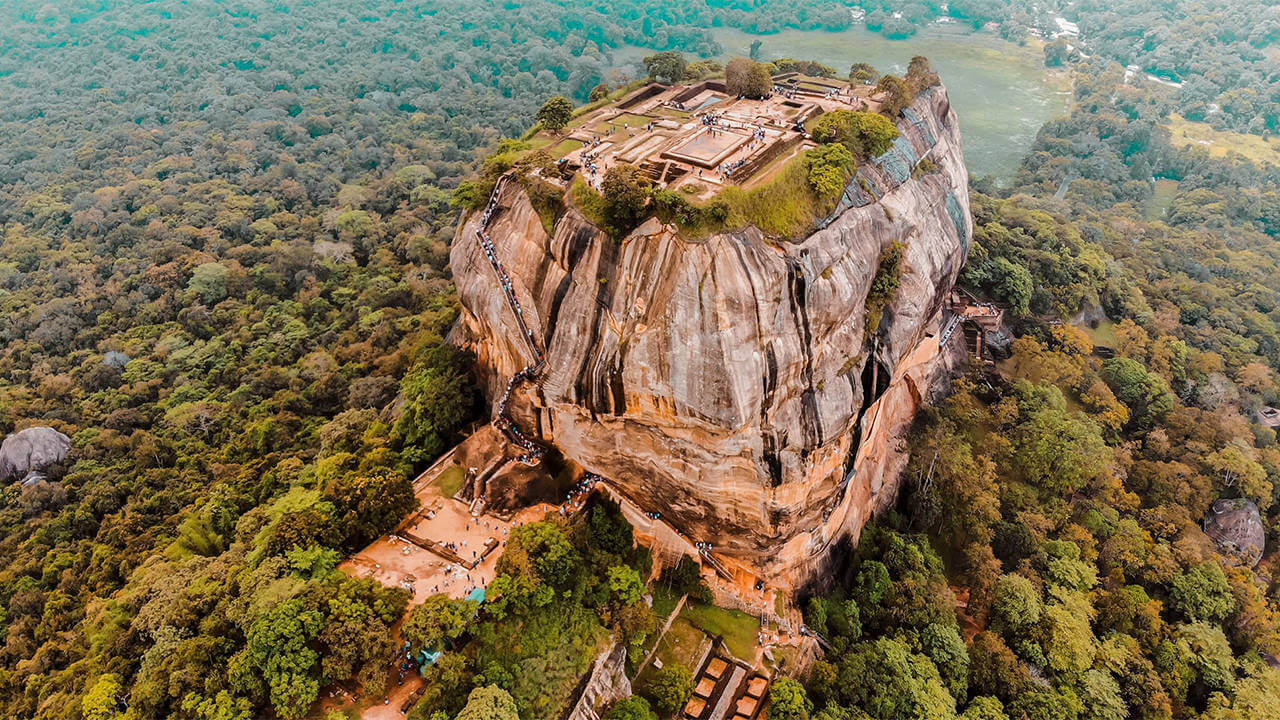
Koneshwaram temple
Myths surrounding the temple of Koneswaram associate it with the popular Indian epic Ramayana, and its legendary hero-king Rama. Koneswaram was developed in the post classical era, between 300 CE and 1600 CE by kings of the Tamil Pandyan and Chola empires, and Vannimai chiefs of the Eastern Province, with decorations and structural additions such as its famous thousand pillared hall furnished by kings of
the Tamil Pallava dynasty and the Jaffna kingdom. This culminated in Koneswaram becoming one of the most important surviving buildings of the classical Dravidian architectural period by the early 1600s. In 1624 CE, the Konewaram temple was largely destroyed by the Portuguese colonials. Hindus built a successor temple at a nearby site in 1632 CE - the Ati Konanayakar temple in nearby Tampalakamam - to house some of the destroyed temple's idols, where they are now worshipped. In the 1950s, the ruins of the temple were discovered underwater beside Swami Rock.

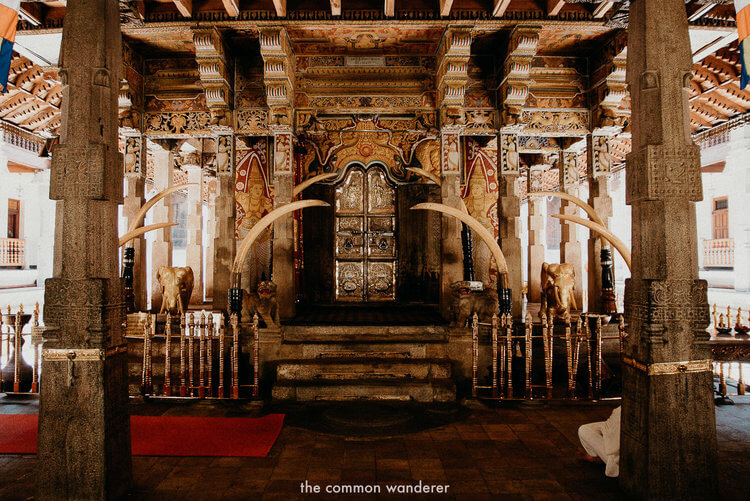

Climb Sigiriya Rock fortress and Dambulla Cave Temple (Site Entrance Not include) Sigiriya rock rises 200 meters above lush green jungles, and is a declared UNESCO World Heritage Site. Asia's oldest landscaped gardens and ponds encircle this rock fortress, and at its summit is the renegade King Kasyapa's "palace in the sky". Fifth century ingenuity and skill produced a luxurious royal citadel with ramparts, moats, gateways, and a well laid out city, complete with bathing pools and gardens. On the climb up you could view the Mirror Wall, which still produces a glass-like reflection 1500 years after it was first created. Also on the way up you would see the famous Sigiriya frescoes - exquisite images of bare-breasted maidens painted on the rock face thousands of years ago. Located in the Cultural Triangle, Sigiriya is situated in the district of Matale.
Dambulla Cave Temple (Site Entrance not include) Dambulla marks the geographical centre of the island and the Cultural Triangle. It also holds its own treasure - a magnificent temple, which is a series of five caves established as a monastery in the 3rd Century BC. These caves, built at the base of a 150m high rock during the Anuradhapura (1st Century BC to 993 AD) and Polonnaruwa times (1073 to 1250), are by far the most impressive of the many cave temples found in Sri Lanka. Access is along the gentle slope of the Dambulla Rock, offering a panoramic view of the surrounding flat lands, which includes the rock fortress Sigiriya, 19kms away. Families of friendly monkeys make the climb even more interesting. Dusk brings hundreds of swooping swallows to the cave entrance.
Visit Kandy City
Kandy is Sri Lanka's second biggest city and the capital of the central province. The busy town is situated in a valley at an elevation of 600m, inside a wide loop of the Mahaweli River and is surrounded by hills covered with tropical vegetation. Home to the Sri Dalada Maligawa - the beautiful temple that houses the tooth relic of Lord Buddha - Kandy is also a popular stop during July/August when the annual Esala Perehera (holy festival) takes to the streets of the city. The cool climate of the hills is a relief after the cloying heat of the lowlands, and the lovely Kandy Lake and the drives around it are set amidst great scenic beauty.
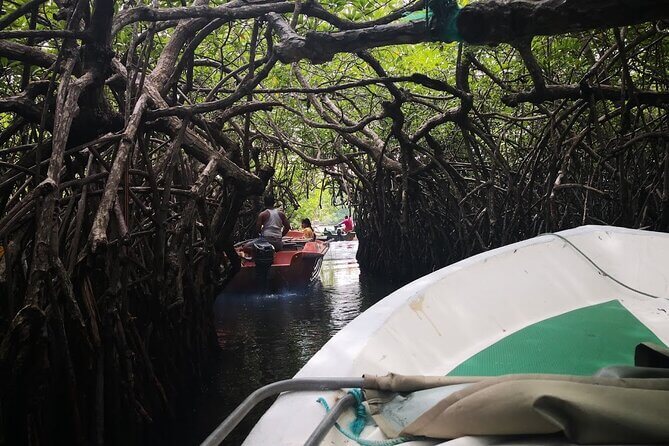
After visit Kandy sites and overnight stay in Kandy.
Seetha kotuwa – Early morning leave to Hasalaka and come back to Kandy in the Evening Sitadevi was kept in queen Mandothari’s palace until she was moved to Sita Kotua and then on to Ashoka Vatika. The remains that are found are the remnants of later civilizations. This place is now called Sitha kotuwa which means ‘Sita's Fort’ and got its name because of Sitadevi's stay here.

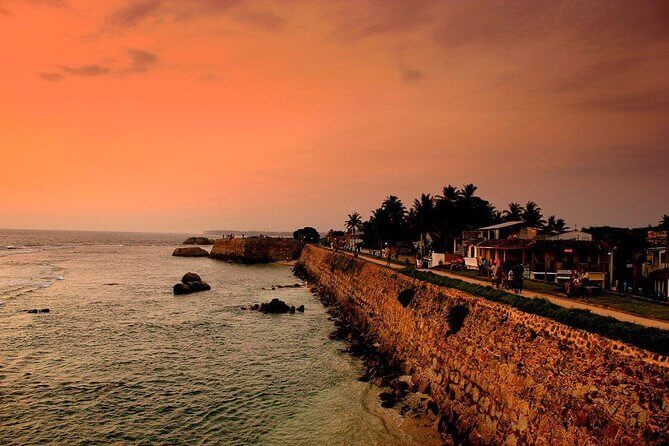

After breakfast transfer to Bandarawela
Sita Tear Pond and Chariot Route atop of Pussellawa Hills.
The summit of the hill overlooking Frotoft Estate in Pussallawa is the place where Lord Hanuman first set his foot on Lanka. These hills stand tall in-between King Ravana's capital city and Ashoka Vatika. The
barren land here is believed to be the route in which King Ravana took Sitadevi from his capital city Lankapura to Ashoka Vatika, which was a paradise on earth. Till date no vegetation grows on this passage except grass. King Ravana is believed to have taken this passage on top of these hills to show Sitadevi the beauty of his kingdom.
Nuwara Eliya
The hill station of Nuwara Eliya (City of Light) is celebrated for its fresh climate, the wonderful scenery all around, and its "Englishness" Wonderful mountain panoramas surround the wide valley, into which
fall many lovely but icy waterfalls. There are still a few patches of virgin jungle left, with stunted, gnarled trees, primitive tree ferns and strange looking lichen. It is the hub of the tea country, lying 77 km from Kandy and 180 km from Colombo. At an elevation of 1800m, the temperature varies from 10 to 20 degrees Celsius, falling to near zero on winter nights and producing occasional frost. The roads zigzag through the most spectacular mountain scenery to reach this picturesque district.
Seetha Amman temple, Seetha Eliya
The stream that runs from the hill, catered to the needs of Sitadevi during her stay at Ashok Vatika. She is said to have bathed in this stream. About a century ago of three idols were discovered in the stream, one of which was that of Sita. It is believed that the idols have been worshipped at this spot for centuries. Now there is temple for Lord Rama, Sitadevi, Luxshmana, and Hanuman by the side of this stream. It is interesting to note that foot prints akin to Lord Hanuman's are found by this river and some are of small size and some are of large size, which tells us of the immense powers of hanuman transforming himself into any size.
Ishtreepura - Konda Kattu Gala
Ishtripura means an area of women in Sinhalese. This was one of the places to which King Ravana shifted Sitadevi as a precautionary measure which he was forced to take by Lord Hanuman's advent.
There are lots of intruding tunnels and caves in this area. This seems to be a part of a great ingenious network of paths, which is interconnected to all the major areas of King Ravana's city. Sitadevi took bath in this very stream and had dried her hair sitting on a rock and put clips to her hair,hence this rock is known as Konda Kattu Gala. This is situated in the Welimada Area.
Divurumpola
Divurumpola means a ‘place of oath’. This is the place where Sita underwent the “Agni” test. She came unscathed and proved her innocence and purity. The message of Rama’s victory over Ravana was sent to Sita. After a bath and adorned with jewels she was taken on a palanquin before Rama. Meeting her husband after such a long time she was overcome with emotion, but Rama seemed lost in thought. At
length he spoke, “I have killed my enemy. I have done my duty as a true king. But you have lived for a year in the enemy’s abode. It is not proper I take you back now.” Sita was shocked. “You have broken my heart” she said, “only the uncultured speak like this”. Have you forgotten the noble family I come from? Is it my fault Ravana carried me off by force? All the time, my mind, my heart, and soul were fixed on you alone, my lord!”
Ravana Cave & Tunnel Network
These tunnels prove beyond doubt the architectural brilliance of King Ravana. These tunnels served as a quick means of transport through the hills and also as a secret passage and networked all the important
cities, airports and dairy farms. A .close look at these tunnels indicates that they are man-made and not natural formations. This Buddhist shrine at Kalutara was where once King Ravana & palace and a tunnel existed. Existing tunnel mouths are situated - Isthripur at Welimada, Ravana cave at Bandarawela, Senapitiya at Halagala, Ramboda, Labookelle, Wariyapola/Matale, and Sitakotuwa/Hasalaka. In addition there are many more tunnels.
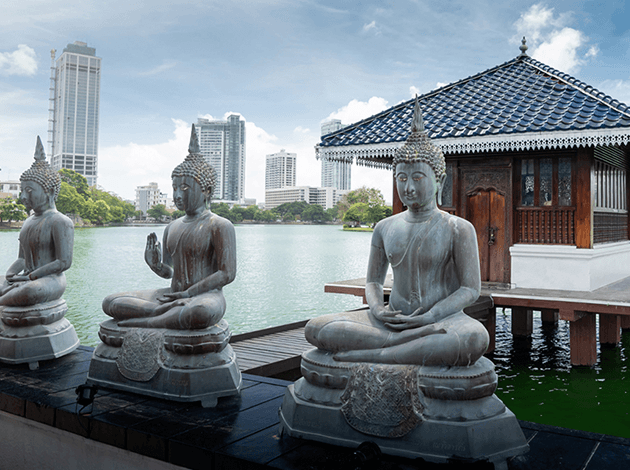
After visit Ella Ramayana sites transfer to Colombo
A frenetic beehive of commotion on the west coast of the island, this metropolis is the center of economic and political endeavor in Sri Lanka. Situated 30kms from Katunayake Airport, the town is relatively easy to get around A great many restaurants, shopping malls, banks, travel agencies, tourist information centers and hotels are located on the 'seaside' or 'landside' of the main Galle Road, which starts from Fort (also known as Colombo 1) and runs parallel with the sea all the way down to Galle town on the south coast. Traffic is insane and crossing the road is sometimes downright dangerous, but by sunset, the city is more tranquil and very pretty. One of the loveliest sights here is watching the sun slip into the ocean while walking along Galle Face green, or while having a drink on the terrace at the Galle Face Hotel
Kalaniya
After King Ravana’s death, Vibeeshana was coroneted as King of Lanka by Lakshmana at Kelaniya. There are murals enshrined outside the Buddhist temple depicting the crowning of Vibeeshana. The Kelani
River is mentioned in the Valmiki Ramayana and Vibeeshana palace was said to be on the banks of this river. The reason Lakshmana crowned Vibeeshana, was because Rama had to return to India as he had to continue his self-exile of 14 years to honour the commitment to his father, King Dasarath of Ajodhya.

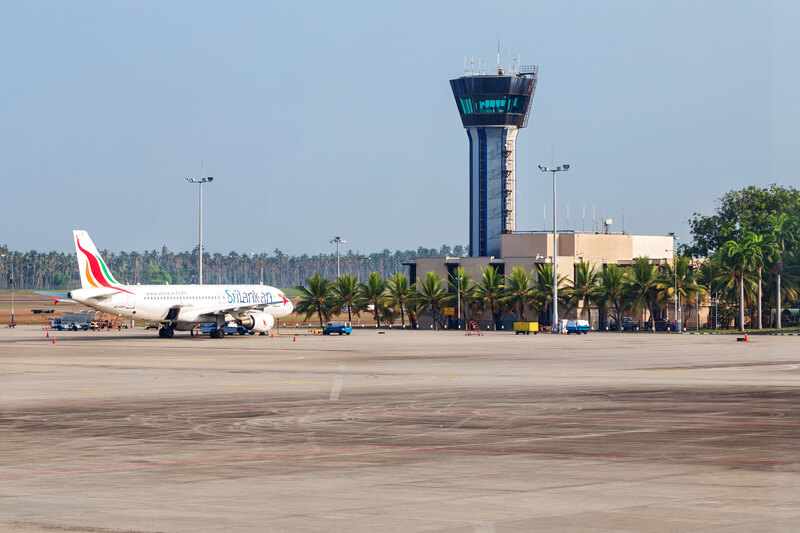

As the tour comes to an end, you will be dropped to the Bandaranaike International Airport for departure. As heavy as the heart may be, bidding farewell is coming your way. Let’s part our ways until we meet next. Let your memories with us in Sri Lanka be in your hearts forever
As per flight schedule transferred to the airport of the departure. Say good bye with a heart to return.
.gif)